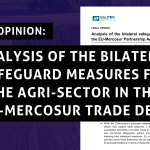Dear EU Heads of States and Governments,
RE: The Clean Industrial Deal and Competitiveness
We are writing ahead of the European Council 17-18 October meeting, in which the EU’s competitiveness agenda will be discussed.
In light of the forthcoming ‘Clean Industrial Deal’ (CID), the best way to preserve the EU’s long-term competitiveness is an EU green industrial strategy centred around the European Green Deal and its targets, which stimulates the production of net-zero technologies, ends our fossil fuel dependence and reduces our energy and material demand.
Moving away from a carbon and material-intensive economy and harnessing the benefits of a renewables-based energy system will require addressing the large investment gaps our economies are facing: leaving individual member states who have more fiscal space to subsidise their industries risks further fragmenting the single market and undermining cohesion between countries and regions. Instead, we urge European leaders to commit to a coordinated approach at the EU level that strengthens the role of public authorities to steer and shape the industrial transformation ahead of us, harnessing the strengths and addressing the challenges of various regions to leave no one behind.
This will include integrating strong social and environmental conditionalities in the CID, and recognising civil society organisations and trade unions as key stakeholders in the governance of the EU’s industrial strategy, in order to foster a just transition.
Climate ambition as the guiding principle of the CID
The European Green Deal and its targets should be the guiding principle of the EU’s industrial and energy transition. Investments and law-making efforts on Europe’s industrial development and its competitiveness will need to aim in the short term at meeting, or better exceeding, the EU’s “Fit for 55” targets for 2030. With long investment perspectives to address Europe’s ageing manufacturing base, it is essential to provide further investment certainty about the EU’s Green Deal implementation by timely adopting ambitious 2040 and 2035 climate targets aligned with science and equity.
Our research on the co-benefits of ambitious climate action indicates that aligning with a net-zero goal by 2040 – going further than the proposed 90% net target – would yield economic and societal benefits across the EU of at least €1 trillion by 2030, next to massive savings from avoided climate damage. People in Europe, but also the industry itself, are increasingly experiencing the adverse impacts of the climate crisis, which destroys assets, disrupts value chains and represents a growing weight on public budgets. Cutting emissions is more urgent than ever to avoid further damage and disruptions.
Boost competitiveness and resilience by reducing energy and resource demand
Europe’s heavy reliance on imported energy and raw materials in a turbulent geopolitical context creates economic and political dependencies and is responsible for high energy price levels. To strengthen the resilience of the EU economy, the CID should on the one hand focus on deploying renewable energy and flexibility solutions, but on the other hand seize the benefits of energy and resource efficiency for our industries (including energy-intensive ones).
Key enablers will be to reduce the consumption of primary materials and to increase secondary-use rates of key materials by up to 70-80% through more circularity, as shown in our Paris Agreement Compatible (PAC) energy scenario, in which we model the transition of the industry and non-industry sectors towards climate neutrality in 2040. This will require important and rapid changes in industrial processes, including lowering the energy demand and a switch to renewable hydrogen only in some sectors where no alternatives exist, such as in high-temperature applications, combined with renewables-based electrification.
Through an ambitious Circular Economy Act, the CID should also push European companies to become sustainability frontrunners in a world of finite resources. Resource reduction targets would give the direction of travel to companies, who are in need of long-term perspectives to invest in the future.
More circularity and ambitious policies for resource and energy savings will enable cost savings for both people and companies, foster more resilient supply chains and generate many new jobs, both in the eco-design of longer-lasting products as in recycling, repair and reuse activities. Next to this, the CID will need to make sure there is a just transition for workers in non-circular sectors that will be affected, and adequate education, upskilling and reskilling for the new quality jobs, with specific support to ensure women equal access.
Support green strategic sectors with strings attached
The massive financing needs for the industrial transformation ahead of us are well-known and recently confirmed by the Draghi report on the future of European competitiveness. Additional support to industry via EU funds (e.g. the recently proposed “Competitiveness Fund”) should be based on fresh own resources, and should not divert existing funds earmarked for climate, environment and social investment.
Targeted funding to companies should come with strong social and environmental conditionalities, making sure we support the best-in-class players, prevent rent-seeking by incumbent ones and deliver additional societal benefits. In times of cuts in public budgets and a cost of living crisis, it would be unacceptable to transfer public funds to companies without any conditions. Such conditions should apply whether national or EU funds are concerned, for greater predictability and simplification for companies, and to avoid subsidies shopping by companies operating in several member states. Derisking tools could also be complemented with profit-sharing mechanisms to avoid regressive distributional impacts with public budgets bearing the risks and companies reaping all the profits.
Investments should be primarily aimed at supporting the sectors of the green future, not of the fossil past. Absolute priority should be given to scaling up renewable energy production to meet 100% of the EU’s energy demand by 2040, alongside substantial efforts to increase electricity grid capacity. We also urge European leaders not to fall into the trap of false solutions by prolonging the use of fossil gas by promoting so-called low carbon gases (fossil or nuclear based) and the significant upscaling of unproven technologies such as Carbon Capture and Storage (CCS) or Carbon Management strategies.
No industrial deal at all costs
The CID’s ambition to strengthen our green manufacturing base should by no means give a free pass to particular industries demanding a rollback of environmental, public health or social laws. Efforts under a simplification agenda should be about streamlining and harmonising reporting and providing guidance to companies to ensure proper implementation and compliance. Simplification should not translate into lowering social and environmental protection.
Finally, spurring the EUs global competitiveness should not come at the expense of resource-rich countries developing their own green industrial policy. Rather than locking these countries into the role of exporters of unprocessed raw materials and perpetuating globally inequitable consumption of raw materials, Clean Trade and Investment Partnerships must include clear, measurable and bespoke sustainability commitments to support the development of clean industries and value chains in partner countries.
Yours sincerely,

Chiara Martinelli, Director of Climate Action Network Europe




